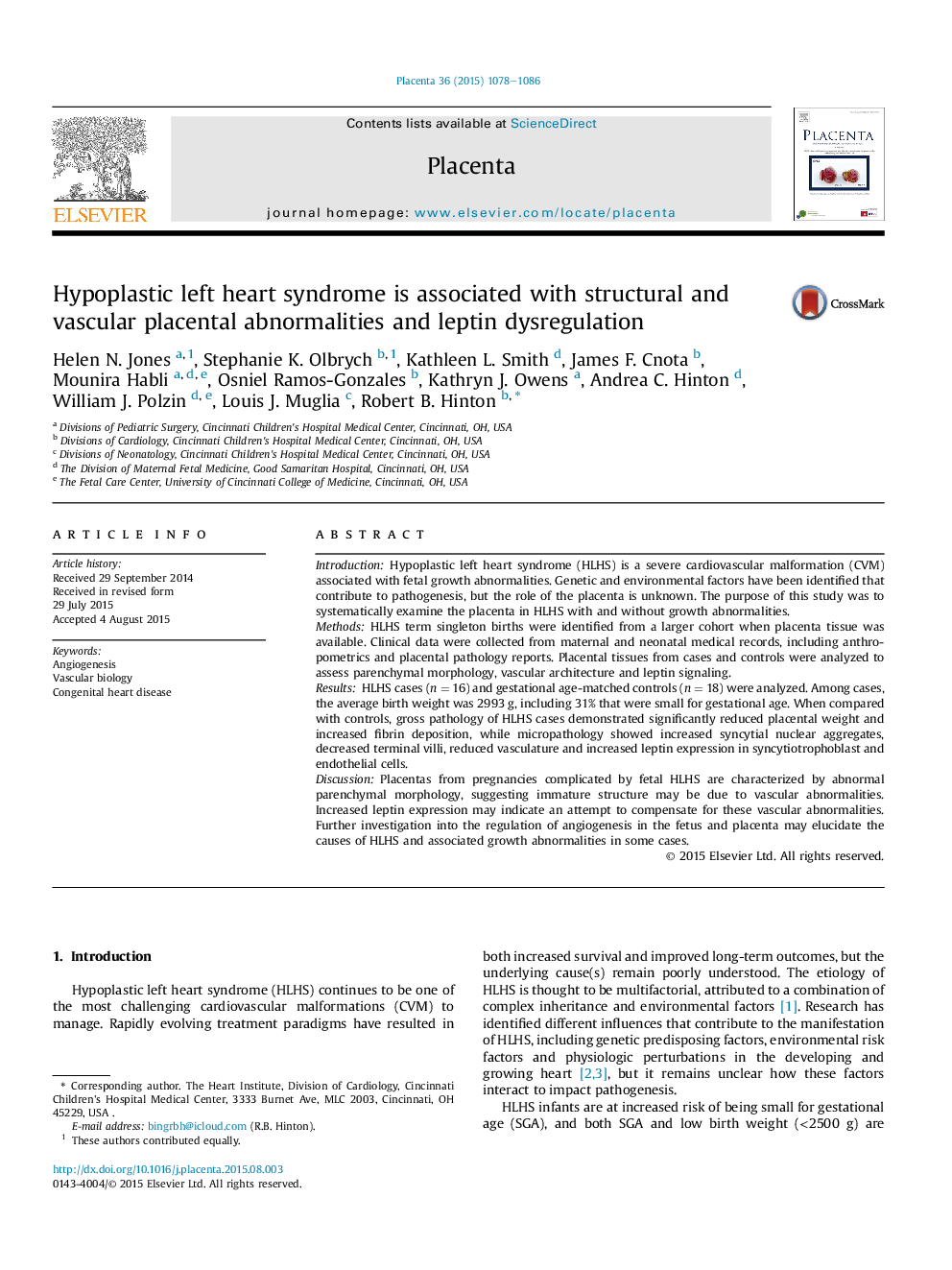| Article ID | Journal | Published Year | Pages | File Type |
|---|---|---|---|---|
| 2788471 | Placenta | 2015 | 9 Pages |
•Placentae from hypoplastic left heart syndrome cases are immature compared to control.•Leptin expression is up regulated in the hypoplastic left heart syndrome placenta.•Villous vasculature is reduced in placenta from hypoplastic left heart syndrome cases.
IntroductionHypoplastic left heart syndrome (HLHS) is a severe cardiovascular malformation (CVM) associated with fetal growth abnormalities. Genetic and environmental factors have been identified that contribute to pathogenesis, but the role of the placenta is unknown. The purpose of this study was to systematically examine the placenta in HLHS with and without growth abnormalities.MethodsHLHS term singleton births were identified from a larger cohort when placenta tissue was available. Clinical data were collected from maternal and neonatal medical records, including anthropometrics and placental pathology reports. Placental tissues from cases and controls were analyzed to assess parenchymal morphology, vascular architecture and leptin signaling.ResultsHLHS cases (n = 16) and gestational age-matched controls (n = 18) were analyzed. Among cases, the average birth weight was 2993 g, including 31% that were small for gestational age. When compared with controls, gross pathology of HLHS cases demonstrated significantly reduced placental weight and increased fibrin deposition, while micropathology showed increased syncytial nuclear aggregates, decreased terminal villi, reduced vasculature and increased leptin expression in syncytiotrophoblast and endothelial cells.DiscussionPlacentas from pregnancies complicated by fetal HLHS are characterized by abnormal parenchymal morphology, suggesting immature structure may be due to vascular abnormalities. Increased leptin expression may indicate an attempt to compensate for these vascular abnormalities. Further investigation into the regulation of angiogenesis in the fetus and placenta may elucidate the causes of HLHS and associated growth abnormalities in some cases.
